Understanding what is disability and its impact on children is essential for early identification and intervention. A disability in children can affect their learning, mobility, communication, or overall development. According to the World Health Organization (WHO), around 15% of the world’s population experiences some form of disability, and early diagnosis plays a crucial role in effective intervention. In this blog, we will explore the types of disabilities, their symptoms, and their causes, providing parents and caregivers with valuable insights.
What is Disability?
Disability refers to a physical, intellectual, sensory, or developmental condition that limits a child’s ability to perform daily activities. Some disabilities are present from birth (congenital disabilities), while others develop due to illness, injury, or environmental factors. Disabilities can be temporary or permanent, mild or severe, and they may affect one or multiple areas of a child’s development.
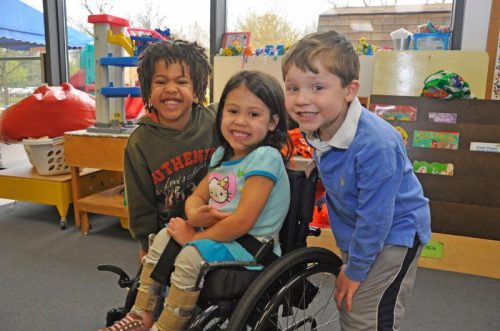
Types of Disabilities in Children
There are several types of disability that affect children. These can be broadly classified into the following categories:
1. Physical Disabilities
Physical disabilities affect a child’s mobility, strength, or dexterity. These disabilities may be caused by genetic disorders, injuries, or neurological conditions. Some common examples include:
- Cerebral Palsy: A group of disorders that affect movement, balance, and posture due to brain damage.
- Muscular Dystrophy: A genetic condition causing muscle weakness and degeneration over time.
- Spina Bifida: A birth defect affecting the spine and spinal cord.
- Limb Deformities: Congenital or acquired conditions affecting the shape or function of limbs.
2. Intellectual Disabilities
Children with intellectual disabilities may struggle with reasoning, problem-solving, and adaptive behaviors. These disabilities often result in challenges in learning and everyday functioning. Common conditions include:
- Down Syndrome: A genetic disorder characterized by developmental delays and intellectual impairment.
- Fragile X Syndrome: A genetic condition leading to cognitive impairments and behavioral challenges.
- Global Developmental Delay (GDD): A significant delay in achieving developmental milestones in multiple areas.
3. Sensory Disabilities
These disabilities affect one or more senses, including sight and hearing. Early intervention can greatly enhance a child’s ability to adapt to their surroundings. Examples include:
- Blindness or Low Vision: Partial or complete loss of vision affecting daily life activities.
- Deafness or Hearing Impairment: Partial or complete hearing loss impacting communication and learning abilities.
- Sensory Processing Disorder (SPD): Difficulty in processing sensory information such as touch, sound, and light.
4. Developmental Disabilities
Developmental disabilities affect a child’s growth, learning ability, and social skills. These disorders often require long-term management and therapy. Examples include:
- Autism Spectrum Disorder (ASD): A neurological condition affecting communication, social interaction, and behavior.
- Attention-Deficit/Hyperactivity Disorder (ADHD): A condition characterized by hyperactivity, impulsiveness, and inattention.
- Speech and Language Disorders: Conditions that affect a child’s ability to speak, understand, or use language effectively.
5. Learning Disabilities
Types of learning disabilities affect a child’s ability to acquire and use academic skills, despite having normal intelligence. These are not related to vision or hearing impairments but are instead processing disorders. Common examples include:
- Dyslexia: Difficulty in reading and interpreting words and letters.
- Dyscalculia: Difficulty in understanding numbers and mathematical concepts.
- Dysgraphia: Difficulty in writing, including poor handwriting and trouble spelling.
- Auditory and Visual Processing Disorders: Difficulty in interpreting auditory or visual information correctly.
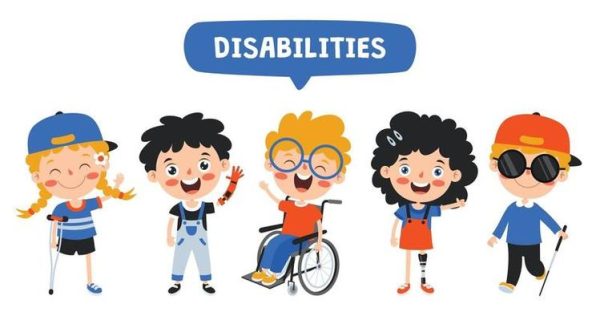
Symptoms of Disability in Children
Recognizing the symptoms of disability early can help in effective management. Some common signs include:
- Delayed speech or language development (difficulty forming words and sentences appropriately for their age).
- Difficulty in reading, writing, or understanding concepts despite normal intelligence.
- Poor motor coordination or muscle weakness, affecting walking, sitting, or grasping objects.
- Struggles with social interaction and communication, including difficulty making eye contact and engaging in conversations.
- Sensory sensitivities (difficulty with sounds, lights, or textures, leading to distress or discomfort).
- Repetitive behaviors or difficulty with change, which may indicate a neurodevelopmental disorder such as ASD.
- Lack of focus and impulsivity, which can be indicative of ADHD or other behavioral disorders.
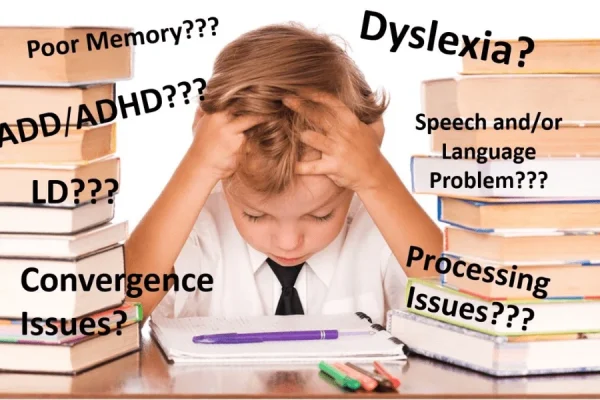
Causes of Disability in Children
Understanding the causes of disability helps in prevention and management. Some common causes include:
- Genetic disorders (e.g., Down Syndrome, Fragile X Syndrome) that affect a child’s physical and cognitive development.
- Premature birth and low birth weight, increasing the risk of developmental delays and disabilities.
- Brain injuries or infections (e.g., meningitis, encephalitis) that can impact cognitive and motor functions.
- Environmental factors, such as exposure to toxins (e.g., lead poisoning), malnutrition, or lack of prenatal care.
- Complications during pregnancy or birth, including oxygen deprivation, which can lead to conditions such as cerebral palsy.
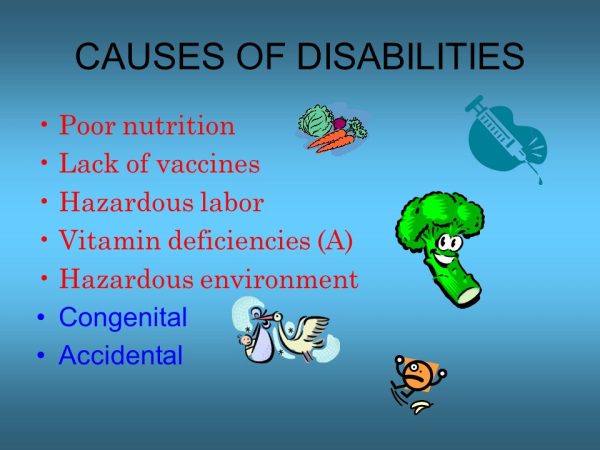
Importance of Early Intervention
Early diagnosis and intervention play a crucial role in improving outcomes for children with disabilities. Specialized therapies, educational support, and medical treatments can help children develop essential skills and lead independent lives. Here are some effective approaches:
- Speech and Language Therapy for children with communication difficulties.
- Physical and Occupational Therapy to enhance motor skills and independence.
- Special Education Programs tailored to individual learning needs.
Assistive Technologies, such as hearing aids, speech devices, and mobility aids, to support daily activities.
Conclusion
There are many types of disabilities that can affect children, each requiring specialized care and support. Early diagnosis, therapy, and inclusive education can significantly improve a child’s quality of life. At Nurturers, we are committed to helping children with disabilities reach their full potential through expert guidance and compassionate care.
If you have concerns about your child’s development, consult a specialist for early intervention and support.
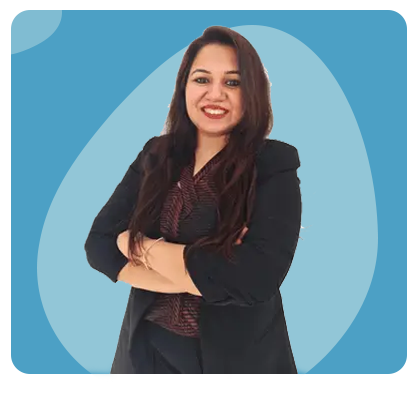
Hi! I am Swati Suri, a Special Educator with 9+ years of experience and the founder of Nurturers. I am passionate about helping children with special needs and supporting their families every step of the way.


